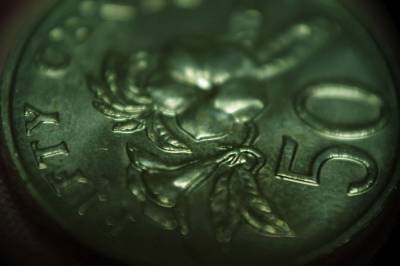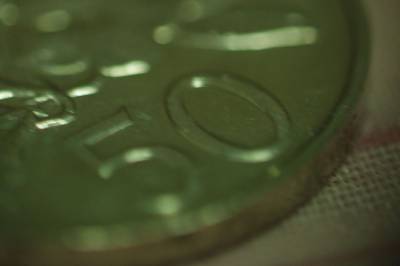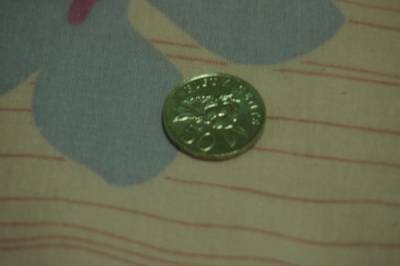Table of Contents
Steady Shot from Your Hand
- Do not open your arms wide (like chicken wings), tuck the arms to your chest… at least the arm that is going to hit the shutter, unless you are shooting in special position or at location that disallow this tactic.
- Brace yourself to a stationary object (wall, rubbish bin, trees, etc)
- Lean your elbows on a stationary object (fence, rubbish bin, bench, etc)
- spread your legs, one in front, one behind, or parallel sideway, etc to give yourself better stability.
- Use a monopod (of course there are ways to use a monopod too).
Why Phase-detection auto-focus fails
- How Phase detection sensor works and micro-adjustment setting solution
- A flash demo of how PDAF sensor works
Why Contrast-detection hunts
- a flash demo and explanation of contrast detection
- Panasonic's defocus shape based improved contrast detection
- “The GH4 uses a new 'Depth from Defocus' autofocus system which offers focus times as quick as 0.07 sec and less hunting, according to the company.” - link: http://www.dpreview.com/articles/8149228526/panasonic-announces-lumix-dmc-gh4-with-4k-video-support
Case Study
- Dragonfly in air: http://www.flickr.com/photos/laurentiucristofor/5807225013/
Manual and Close Focusing Techniques for Macro Photography
Macro Gear Setup Options
- Standard macro lens setup
- To Write
- Wide Angle Lens to Normal Lens with Extension Tube or Bellow
- To Write
- Telephoto Lens with Closeup/Macro filter
- To Write
- Reverse mount macro setup
- aperture control adapter and reserve mount for aperture-less lens setup
Macro Photograph Quick Guide
Macro is about being able to make small object looks big on the photo, and make big object even bigger on the photo.
That is so-called Magnifying, and macro photograph often refer as rate of Magnification.
Read this:
watch this (Tamron 90mm 1:1 macro with 60mm extension tube)
Then, this (Canon SX30 bridge camera with DCR 250 macro adapter)
Then, a short introduction about 28mm reversed with 60mm extension tube
Thus I have done a experiment with all the methods bellow:
- 6:1 Macro with 2x Macro Teleconvertor + 60mm extension tube + reverse 50mm (if it is 28mm, it will be even greater)
Wiki: small-sensor bridge cameras have an incidental advantage in macro photography due to their inherently deeper depth of field. For instance, some popular bridge cameras produce the equivalent magnification of a 420 mm lens on 35-mm format but only use a lens of actual focal length 89 mm (1/1.8″-type CCD) or 72 mm (1/2.5″-type CCD). (See crop factor.) Since depth of field appears to decrease with the actual focal length of the lens, not the equivalent focal length, these bridge cameras can achieve the magnification of a 420 mm lens with the greater depth of field of a much shorter lens.
Lens required to achieve macro magnification
Generally, objects in photo (actually on the film inside camera) are far smaller than real size.
For example, you take photo of a car, and car is framed in the photo, definitely the car is far bigger than the camera, but the image of the car in the camera may be just about “2cm” on SLR camera or “1mm” on a compact digital camera.
Thus as you can imagine, if the magnification is 1:1, if a subject like a small apple is as big as your DSLR camera, then if you frame the apple fully on the photo, you can casually call that a “casual macro photograph”, although technically, people often use coin as example.
But just keep in mind, the “film” or the “digital sensor” is far smaller than your camera, so roughly 1/3 of the size of your camera, “casually speaking”.
Magnification calculator list: http://extreme-macro.co.uk/calculators/
- Method 1: just get a Macro Lens,
- like common 100mm fixed prime macro lens and 50mm fixed prime macro lens, (expensive than 1/2 of the camera price, sometimes)
- generally, you can get 1:1 (real life size, frame a 1 dollar coin fully), or 1:2 (half of the real size, frame a apple fully)
- Why can't I just use a normal lens covering 100mm,
- No, because normal lens are far-sighted generally, can't focus to object close to themselves, casually “can't see things clearly within a distance about 45cm.
- Method 2: use a normal lens with Close-up filter
- it is like “give a pair of glass to old people with poor sight, who can't read newspaper closely”
- generally, if you stack several close-up filter in front of the lens, you can get a good magnificaiton in term of the close-up's word - ”Diopter“
- Method 3: use a normal lens with Extension tube
- it is like “Pull the image plane far from the lens to get bigger image”, if you learned physics well in high school.
- Method 4: use the normal lens Reversely adapted to the Camera
- try put the front part of the lens stack to the camera, you will find “You are looking through a Magnifying Glass”
- disadvantage: reverse rings result in an extremely narrow range of distances which can be in focus. But if subject is dead or not moving, it is still ok
- reference:
- reversed laowa 15mm macro: http://gilwizen.com/laowa-15mm-lens-review/
- Method 5: Double Lens Reverse Setup
- put the short lens (A) reversed, and stack to a longer focus length lens (B), then stack the longer focus length lens (B) to the camera.
- the power of magnification is (B/A), in term of focus length, like 50mm reversely stack on 200mm gives you 4x magnification.
- Note: the short lens A is set to focus infinity, and B to focus infinity as well, and you move the whole setup slightly to focus, as the focus range is so shallow
- Note: you may have to put the front of lens-group about 10cm close to the object to be able to focus clearly
- reference:
- double lens vs extension tube: http://www.flickr.com/groups/poor_mans_macro/discuss/72157624305410335/
- detail instruction: http://prodipx.wordpress.com/double-lens-macro/
- Method 6: use a normal lens with a Macro Converter lens stacked in front.
- easy and cheap way to setup,
- e.g. Raynox DCR 250 is 8x diopter
- additional reading
- Battle between Extention Tube and Close-up adapter lens/filter
Extreme Macro lens beyond 2x
- 5x macro lens (updated in 2019)
- Laowa 25mm f/2.8 2.5-5x Ultra Macro Lens Review with Sample Photos: https://www.youtube.com/watch?v=da5VHOJ-DoQ
Calculation of magnification in Macro Photography
the 1:1 (1 to 1 real size ratio) is like when you can clearly frame a 50 cents coin (the largest coin, roughly the size of the film canvas or sensor size) to cover all the area of photo.
Double Lens 50mm-reverse-onto-55mm setup, 10 cm close to coin
Most small compact cameras can focus at that close distance without any problem, but DSLR lens normally can not.
if you can frame into a portion of the coin, that is 2:1 or 4:1 (2x, 4x) magnification;
if by maintaining the sharp focus, you can't frame all it up, then that is around (1:2, 1:4) or (0.5x, 0.25x) magnification.
50mm-reverse-onto-200mm,10cm close to coin; 200mm lens only, 2 meter away;
The calculation of magnification of double lens setup and macro filter setup:
- Let the reversed-lens/macro-filter on the front as lens A,
- Let the lens on the camera as lens B,
- Then the magnification of the setup is:
- lens.group.magnification = B.focal.length / A.focal.length
- for macro filter with Diopter number, the equivalent focal length = 1000 / Diopter number, such as +8 Diopter like a 1000/8=125mm lens reversed
- final.magnification = (1+B.built-in.magnification)*(1+lens.group.magnification) - 1
For example, based on the formula:
my pentax M 50mm f1.7 reversed onto my pentax M 200mm f4,
- lens.group.magnification = 200mm / 50mm = 4
- final.magnification = (1+0.13)*(1+4)-1 = 4.6
- 0.13 is the 0.13x magnification my 200mm f4 can produce originally, based on its spec.
so my total magnification is 4.6x.
use this calculator if your math is not that good
- calculator for close-up filter on lens front situation: http://extreme-macro.co.uk/extreme-macro-closeup-lenses/#calculator
- other people experience with DCR-250
- here is the formula guide: http://www.mystd.de/album/calculator/magnification.html
Reference
- diopter and macro lens from e-How: http://www.ehow.com/about_7221672_diopter-macro-lens_.html
Some Good Macro lens
- Canon MP-E 65mm link


